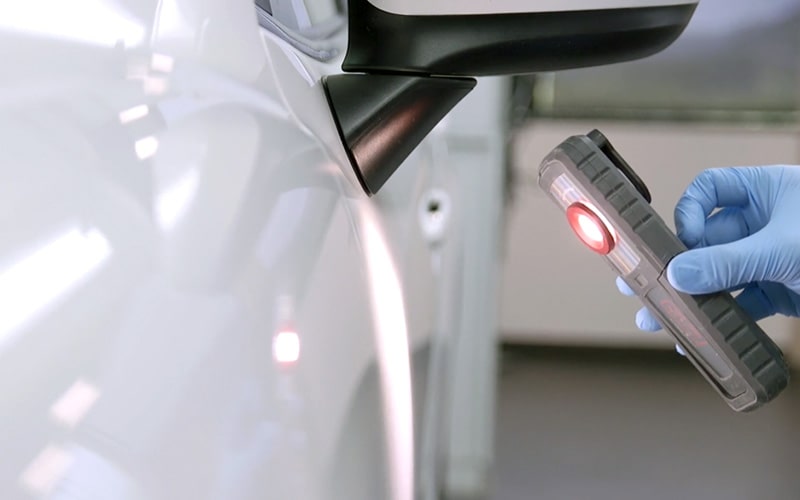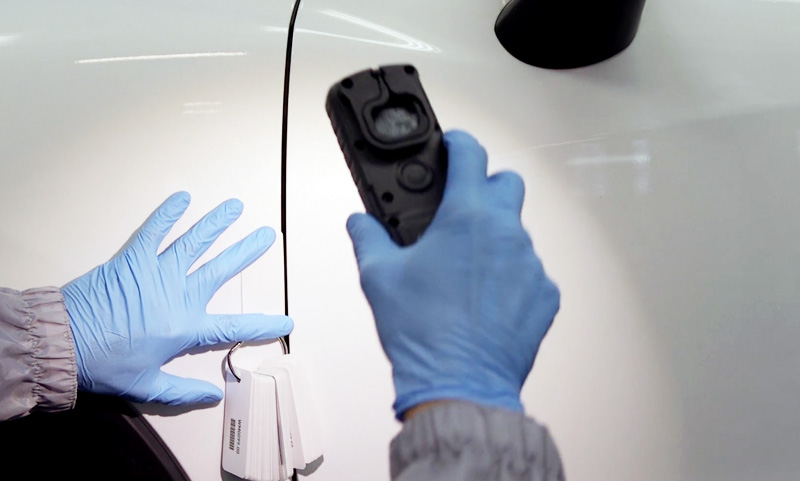
Metamerism in painting, also known as metamery, is an effect that is directly related to a colour mismatch of the repaired part or parts compared with their adjacent parts.
As bodyshop professionals, we may have occasionally considered as identical two or more repainted surfaces, which, after visualising them in different conditions (light, angle of vision, etc.), we have ended up detecting colour differences and colorimetry problems.
These colour mismatches are related to the light source striking the surface and our perception of it. In the following article we will explain in depth what metamerism means in painting, and which are the factors that cause its appearance.
What is metamerism in car painting?
Metamerism or metamery in painting is an effect that is produced by the particular nature of each colour and its response to different light conditions, in addition to the adaptation of the human eye to each lighting context under which the surfaces are observed (in this case the repainted part and its adjacent ones).
Sunlight can cause a totally different colour perception than, for example, light from a light bulb
Conditions leading to the appearance of metamery in paint
There are different factors involved in the appearance of metamerism, the main ones being:
- Light source (illuminance metamerism): colour variations may be caused by the type of lighting under which we observe the part. For example, the shade can vary quite a bit if the light source is sunlight, cabin light or a light bulb.
- Angle of vision: also known as geometric metamerism, this problem occurs when we observe the part from different viewing angles, varying the incidence of light on the object, and causing an appreciation of the colour that may differ from reality.
- Human factor: these differences in perception generally have biological reasons and usually affect the individual’s ability to see. Some vision problems, such as ageing of the crystalline lens, can cause different colour perceptions.
- Depth of field: this factor is caused by the distance at which the repaired part is observed, and colour perception may vary depending on whether the observation distance is shorter or longer.
Paint pigments and metamerics
colour differences can also be caused by a combination of different pigments in the paint mixture applied. Each of these pigments, depending on their composition, may behave differently depending on the different light sources or the amount of light that strikes them, which will ultimately cause colorimetry problems in the repaired part.

To avoid this problem, when repainting one or more parts, we recommend using the same basic colours as those used during the repainting of the original vehicle, thus minimising the appearance of the metamerism effect.
Another cause may lie in having used an unknown colour shade (for which no mixing formula is available) without testing the shade under different light sources prior to application.
How to avoid metamerism in repainting
Contrary to what happens with other refinishing jobs, as this problem is mainly caused by the colour coat, polishing the surface will not be enough to correct this defect.
However, in small colour mismatches, we can correct it by making a colour blending in the areas adjacent to the application error. In cases where the metamerism effect is too great, we will have to reach the colour layer for its correct repair.
If the colour code or colour variant is available, after its application, we recommend making sure that the correct colorimetry is obtained by checking the repaired part under different light sources, using lamps or light guns. In case of doubt, or if you do not know the colour shade, the most advisable thing to do is to use a spectrophotometer, which will provide information on the colour variant that best suits the repair.


